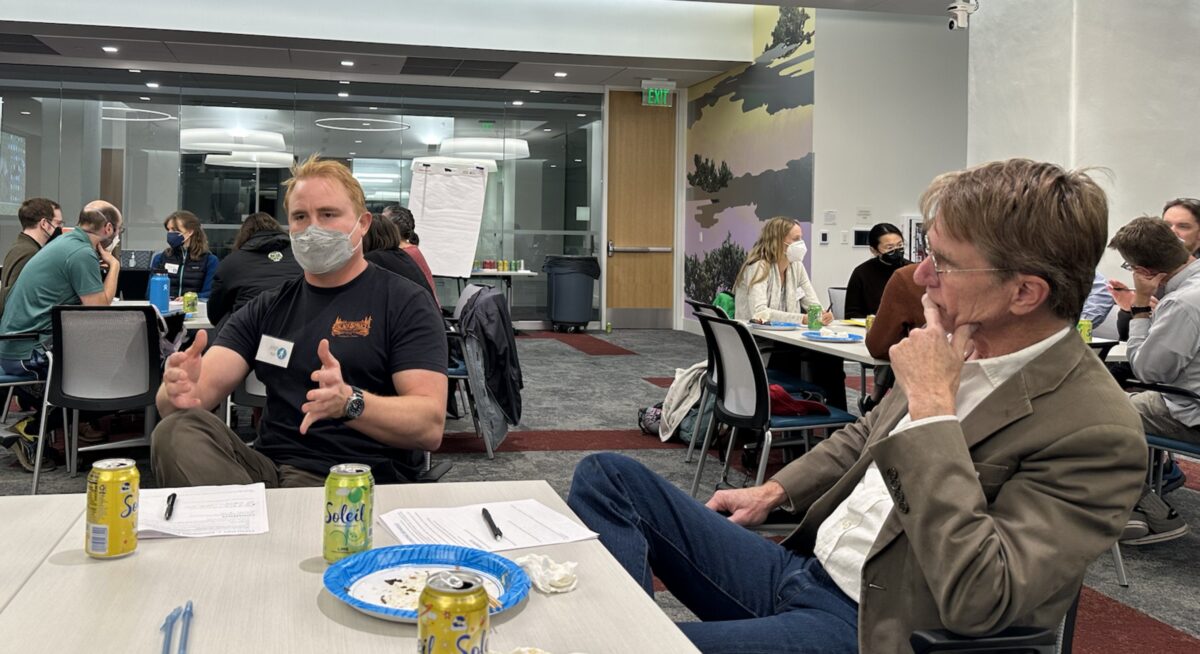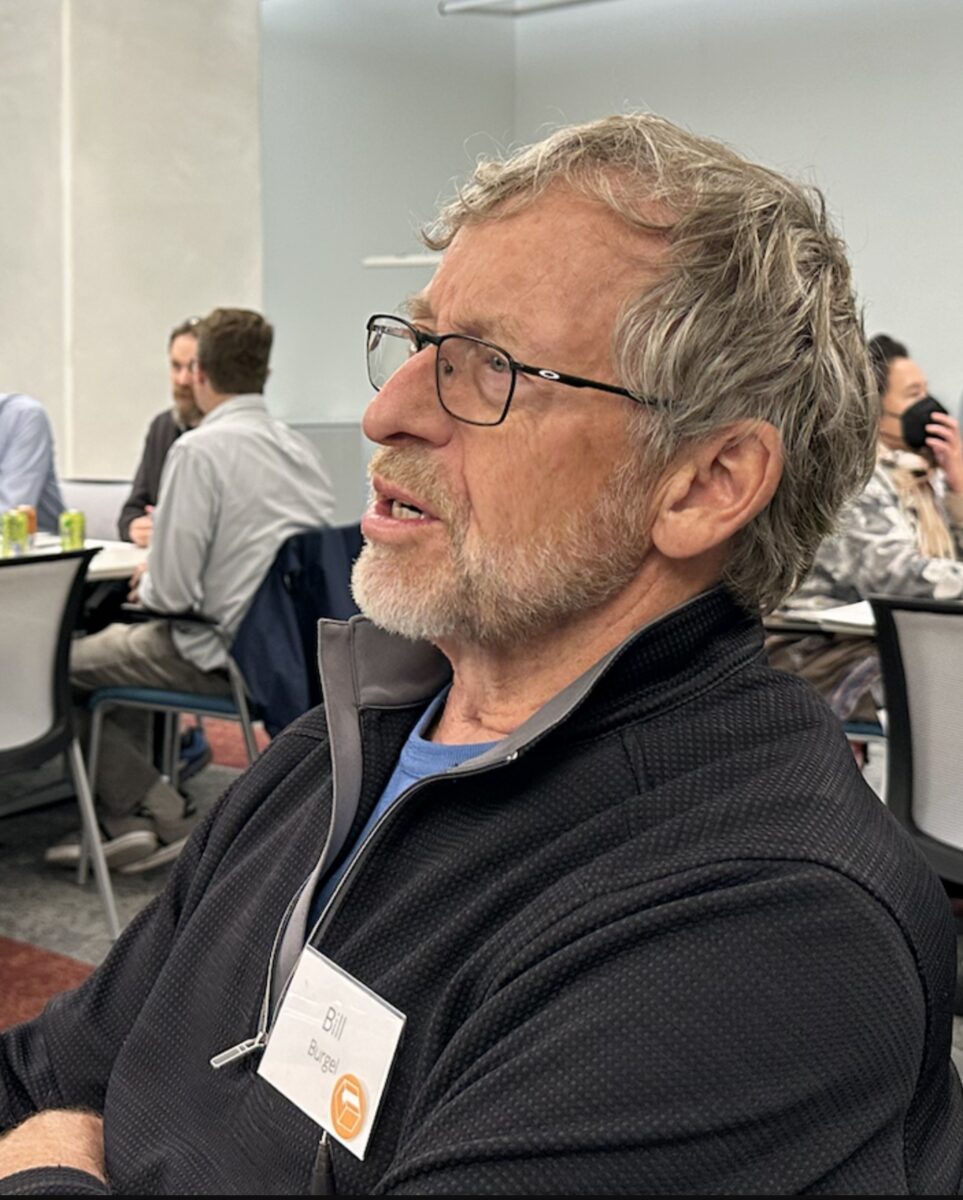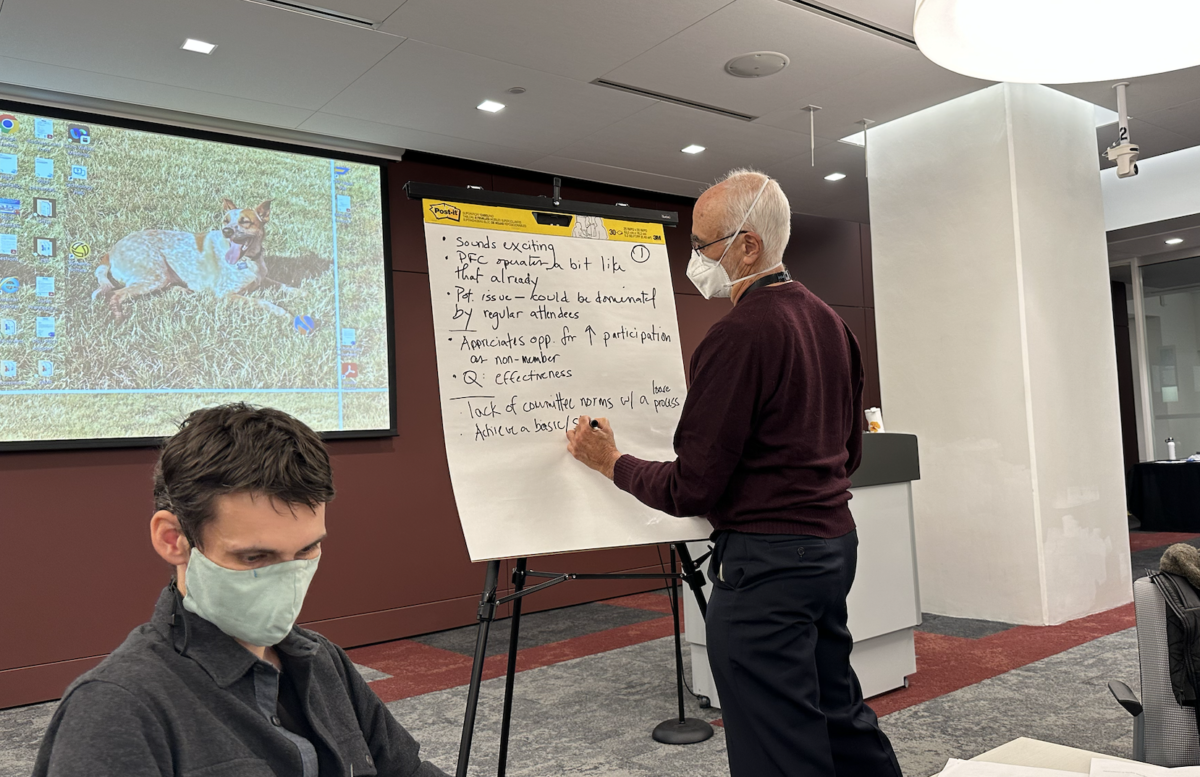
Portland’s modal advisory committees are due for a restructuring. Frustrations among members of the bicycle, pedestrian and freight advisory committees have been simmering for years and the Portland Bureau of Transportation is finally leading an effort to shake things up.
A workshop held at the Portland Building last night showed this process isn’t going to be a cakewalk for those who want to see change in the relationship between the City of Portland and these advisory groups. Though there appeared to be goodwill among committee members, they seemed frustrated by PBOT’s lack of clarity around how the bodies can be most effective.
After PBOT launched this reform effort back in May, project leaders spent the following months evaluating the committees to determine a framework for change. They looked at how other cities run their advisory groups and talked to committee alumni and city staff to get an idea of current conditions. Ultimately, they came up with a problem statement to ask when determining a new committee structure:
“How might we create modal engagement that is meaningful to the participants as well as to the City and PBOT staff, while representing a full range of perspectives?”
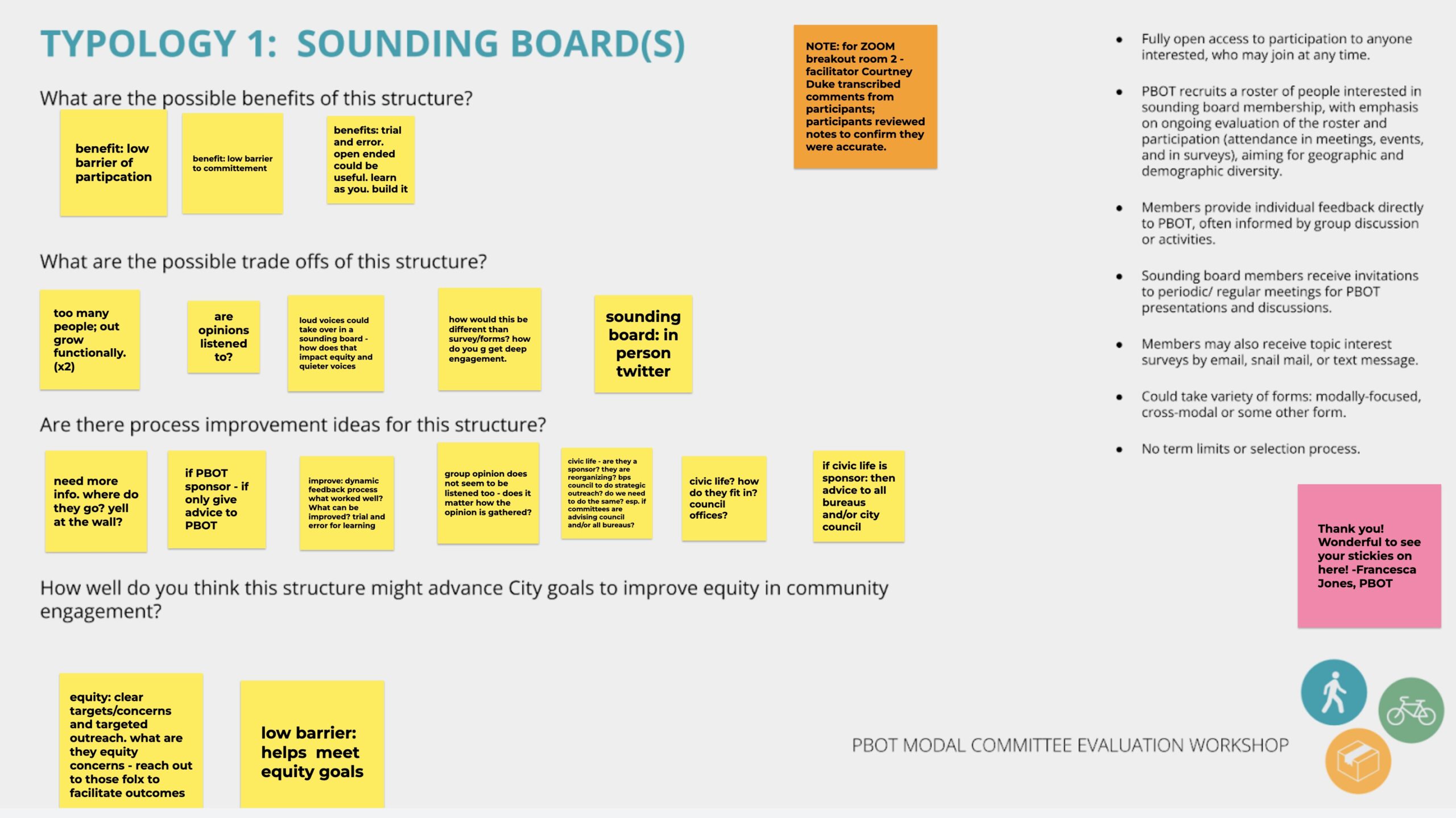
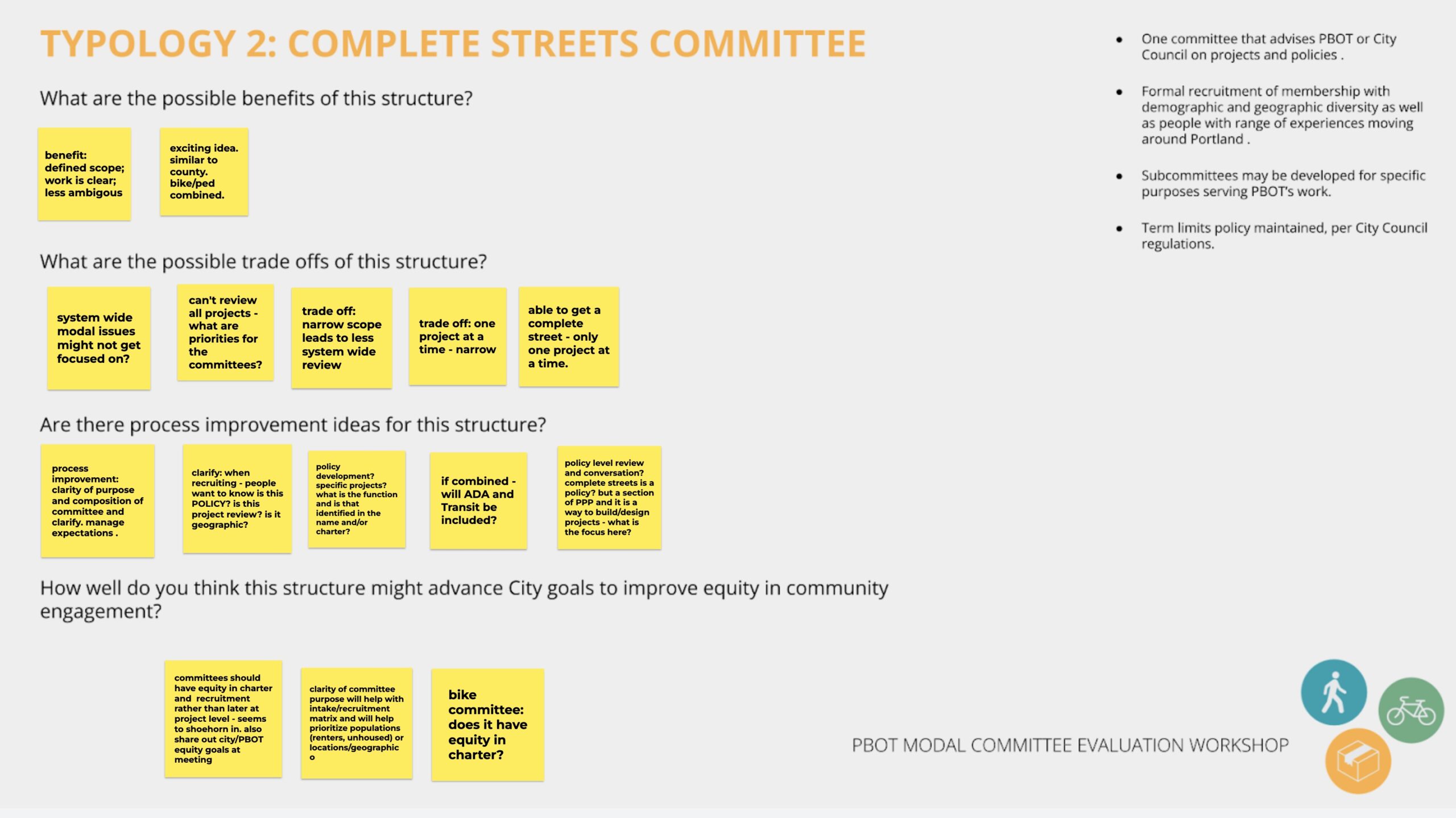


At the meeting last night, workshop participants discussed four potential alternatives to the current committee structure which could better reflect this problem statement. I’ve summarized them below:
- Sounding Board(s), which would be fully open to participation from anyone interested, who can come and go as they please, without any selection process or term limits.
- Complete Streets Committee, which would consist of one committee to advise City Council on projects and policies and involve a formal recruitment of membership with demographic and geographic diversity.
- Existing Structure +Plus, which would maintain the current modal committee setup while opening the door for changes according to public feedback.
- Something Totally New
The majority of time in last night’s workshop was spent split up into groups with participants discussing the pros and cons of each of these potential committee setups. This conversation quickly led to inquiries about what the point of the modal committees is in the first place, which PBOT staffers were hesitant to answer.
Josh Roll, a member of the Pedestrian Advisory Committee (PAC), tried to get at this question right off the bat.
“I’m still keep really curious to know what you guys need from these committees,” Roll said. “You’ve laid out the scenarios for different typologies, and that’s really helpful. But I’m still questioning what it is that would help you do business.”
When PBOT project manager Kristin Hull addressed this question, her answer was opaque.
“[The committees] are just another method of engagement along with all the investigations we do,” Hull said. “We do all our public engagement to ask people questions that we want the answer to so we can use the answer to influence decision-making.”
When pressed to elaborate, Hull resisted, unwilling to differentiate between the advisory groups and other mechanisms of public engagement, which some workshop participants found confusing.
“I’m still just very lost in thinking through the answer to my question,” Roll said. “[The committees] are more than public outreach, I think.”
This confusion gets at the key frustration driving the need for modal committee reform in the first place. If the committees aren’t providing PBOT with meaningful input that they actually use, what’s the point of having them at all?
Members of each of the advisory committees feel they don’t have enough of a say in city policy and are confused about what PBOT wants from them. Looking at the Bicycle Advisory Committee (BAC) in particular, it’s clear these frustrations have boiled over in recent years.
After several major instances where BAC members didn’t feel heard by PBOT – one moment in particular being when PBOT ignored its recommendation to put bike lanes on SE Hawthorne Blvd in early 2021 – many members resigned before their terms were over. The current BAC is composed almost entirely of new members who have only been on the committee for a little over six months.
But BAC members aren’t the only ones who think they have limited power. Members of the freight committee also have gripes about their influence weakening over time despite having an objective advantage over the other committees due to not having to abide by term-limit rules.
One of the biggest problems that committee members and PBOT staff alike want to solve is the lack of racial, socioeconomic and neighborhood diversity within the committees. This is one of the fundamental questions guiding the reform process and will play a large role in determining which structure will prevail going forward.
There appears to be some concern about whether it’s possible to create equitable and diverse committees while maintaining a sense of expertise among members. Participants seemed to agree that members of the modal committees should have some distinguishing knowledge about the subject matter in their field of interest so they can give informed advice to PBOT staff. But this knowledge doesn’t necessarily have to come from a professional career in transportation.
Joe Arraiga, a bike advocate who doesn’t serve on any of the committees, said he thinks experience should matter more than expertise. But membership shouldn’t just be chosen haphazardly.
“I feel like bicycle infrastructure is often designed by someone who doesn’t ride a bike, so they don’t understand what the needs are and why certain designs won’t work,” Arriaga said. “People in the various committees should have lots of lived experience with these different modes.”
While members of the bike and pedestrian committees are largely volunteer advocates who don’t represent any organization, the freight committee is made up of industry professionals who have an outsized influence on City Hall because of their financial power and political experience. At last night’s workshop, freight committee members acknowledged a need for diversity in their group, but said it was important to maintain expertise because freight is a niche subject that the general public doesn’t always know about.
“The turning radius of a [semi-truck] is something you really have to be aware of,” freight committee member Bill Burgel said, adding that he doesn’t think determining the technical points of bike or pedestrian infrastructure is as complicated.
This perspective is what has kept freight committee members in their seats for so long, much to the irritation of people in the other committees who have to adhere to the term limit requirements. Freight Advisory Committee members have been able to stay past their term limits because they asked for an exception to the rule in order to work on the 2040 Freight Plan, which they say would be disrupted if new members were allowed onboard.
Despite these disagreements, it was clear at last night’s meeting that members of the different advisory groups want the chance to interact with each other more and have meaningful discourse. Whichever modal committee structure ends up prevailing, it’s evident there’s a hunger for more dialogue between freight, bike and pedestrian representatives.
PBOT will use the information gleaned from this meeting to come up with another report that they will release later this fall. They’ll also be meeting with transportation justice groups to continue workshopping the best structure for modal committees. We’ll keep you posted on how things shake out.


